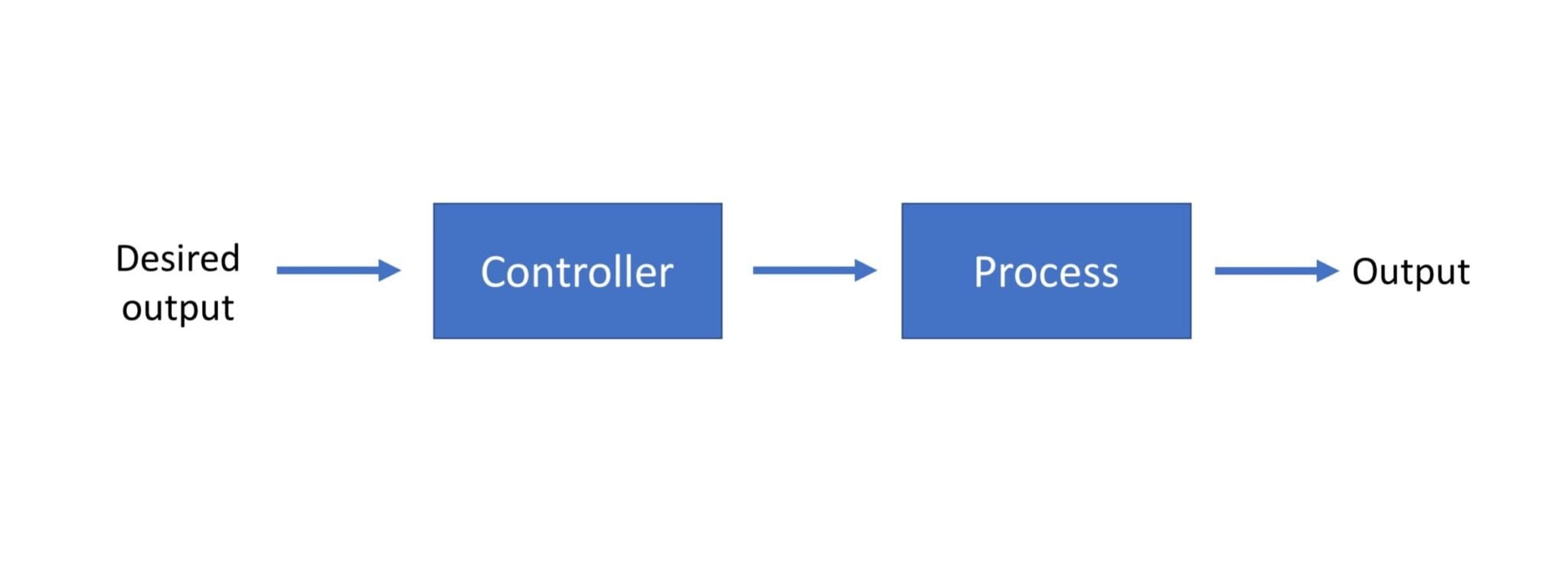An open-loop system is a system where the output of the system does not affect the input or the control action. A closed-loop system is a where the system’s output is fed back to the input or the control action, having a feedback loop, and the output influences its behavior.
Key Takeaways
- Open-loop systems do not use feedback to adjust their output, while closed-loop systems continually monitor output and adjust accordingly.
- Closed loop systems provide better accuracy and stability than open loop systems, as they can compensate for disturbances and changes in the process.
- Open-loop systems are simpler and less expensive than closed-loop systems, making them suitable for applications with less stringent performance requirements.
What is Open Loop System?
Open loop systems are systems where the output is not fed back to the input. These systems are also known as non-feedback systems. The information is not adjusted based on the output in open-loop systems. The output of an open loop system is determined solely by the system’s input and transfer characteristics.
An open-loop control system is one in which the inputs are not measured and compared to the desired outputs. The mechanism is common in everyday things such as autonomous washing machines, which start and stop without the user’s intervention.
Open-loop systems are advantageous because they are effortless and cost-effective. In the open-loop control system, a reference input is given to the system to get the desired output. They do not require complex feedback loops or sensors to measure the output, making them easy to design and install. In addition, open-loop systems are reliable and efficient since they do not need to monitor and adjust the output constantly.
But the system does not consider the achieved output for further reference input. The input is delivered to the system’s controller according to the required output. Depending on the achieved input, the controller yields the control signal fed to the processing unit. Hence, according to the control signal, proper processing and output are achieved.

What is Closed Loop System?
A closed loop system is a feedback control system in which the output at any given moment is used to modify the input. It continually monitors the output and adjusts it to the desired outcome making it possible to maintain the output at a predetermined level.
A closed-loop control system is one in which the system’s generated output determines the controlling action. Closed-loop systems are called completely automatic control systems since they are designed to compare the obtained output with the connection input to produce the desired output.
A control system is designed to produce a specified output by instructed controlling. The control provided to the system can be either output-independent or output dependent. Variation in input based on output results in more accurate system output. Thus, controllability in a closed-loop system is done using a feedback mechanism to generate production.
A closed-loop system is an efficient control system that monitors and responds to changes in the environment of a system. It can keep a desired output in a design by automatically altering its inputs. Closed-loop systems can also reduce the manual intervention needed by a system, increasing its efficiency and accuracy.

Difference Between Open Loop and Closed Loop Systems
- In an open-loop system, the output is not affected by the input, whereas in a closed-loop system, the output is affected by the input.
- Open-loop systems are more superficial than closed-loop systems as they don’t require feedback.
- Open-loop systems are not self-correcting and can drift from the desired operation if conditions change, whereas closed-loop systems will self-correct.
- Open-loop systems can be used in applications where accuracy and precision are not critical, whereas closed-loop systems are better suited for applications that require higher accuracy and precision.
- Open-loop systems are less expensive than closed-loop systems due to the need for feedback components.
Comparison Between Open Loop and Closed Loop Systems
| Parameters of Comparison | Open Loop System | Closed Loop System |
|---|---|---|
| Installation | It is economical and can be easily installed. | Complicated install and expensive. |
| Performance | Open Loop System can perform better if the calibration is appropriately done. | Closed Loop System can perform better because of the feedback. |
| Stability | Open Loop System is more stable. | The Closed Loop System is comparatively less stable. |
| Optimization | For desired output, optimization can not be performed. | It can be done very quickly. |
| Maintenance | Less maintenance | High maintenance |



